Occupational Safety Training for Soccer Ball Manufacturing
99,000 ₫
Note: The above price is calculated per person and may vary depending on the number of trainees participating in the course and market fluctuations. For more accurate pricing support, please refer to the price list or contact our consultants directly.
Occupational safety is an important issue in soccer ball manufacturing plants and needs to be addressed promptly to ensure the health and safety of workers and enhance the reputation of businesses. The Occupational Safety Training course is one of the most effective solutions to raise awareness of accident prevention for workers involved in soccer ball manufacturing.
Table of Contents
Toggle1. Overview of the Soccer Ball (soccer ball)
a. What is a soccer ball?
The soccer ball, also called a soccer ball (soccer ball), is a type of ball used in the sport of football (soccer). It is an important piece of equipment in the game, designed to roll and travel through the air when kicked or passed.
Characteristics of the soccer ball:
- Shape and Size:
- Shape: A soccer ball is usually spherical, ensuring balance when rolling and flying.
- Size: The standard size of a soccer ball is about 22 cm (8.6 inches) in diameter and weighs between 410 and 450 grams.
- Material:
- Outer Layer: Usually made of leather or synthetic materials such as polyurethane. This outer layer protects and provides grip for the ball.
- Inner Layer: Includes an air bladder or rubber padding that helps retain pressure and maintain the ball’s shape.
- Structure:
- Structure: Soccer balls typically consist of 32 panels stitched or bonded together, forming hexagons and pentagons. This structure helps the ball maintain balance and stability in flight.
- Function:
- In the game: The ball is used to perform techniques such as kicking, passing, and shooting to score goals.
- In training: The soccer ball is also used to practice individual skills and team tactics.
- Standards and Regulations:
- FIFA: Official balls used in major competitions must comply with FIFA standards to ensure quality and fairness in matches.
The soccer ball is not just a sporting tool but also a symbol of connection and passion within the global football community.

b. Machinery used in soccer ball production (soccer ball)
1. Cutting and Panel Forming Machines
- Leather and Fabric Cutting Machines:
- Function: Cut pieces of leather or fabric into the shapes and sizes needed to assemble the ball.
- Type: Can be automatic cutting machines or manual cutters.
- Panel Forming Machines:
- Function: Create the panels of the ball, usually hexagons and pentagons, from the cut leather or fabric sheets.
2. Sewing Machines
- Automatic Sewing Machines:
- Function: Sew the panels together to form the final shape of the ball. Automatic sewing machines can perform continuous and precise stitching operations.
- Hand Sewing:
- Function: Sometimes used for high-quality soccer balls that require hand stitching for precision and durability.
3. Pressing and Molding Machines
- Pressing Machines:
- Function: Press layers of fabric and leather to form the ball, ensuring panels adhere firmly and do not tear during use.
- Molding Machines:
- Function: Shape the ball to standard sizes and inspect its shape to ensure uniformity.
4. Inflation Machines
- High-Pressure Pumps:
- Function: Inflate the ball to maintain pressure and ensure the ball retains shape and elasticity. High-pressure pumps are often used during quality testing.
5. Quality Testing Machines
- Durability Testing Machines:
- Function: Evaluate the ball’s durability and resistance to stress, including testing the strength of panels and outer material.
- Pressure Testing Machines:
- Function: Measure and adjust the ball’s pressure to ensure it meets standards.
- Balance Testing Machines:
- Function: Ensure the ball does not wobble when rolling or flying.
6. Printing and Logo Attachment Machines
- Printing Machines:
- Function: Print logos, brands, and designs on the surface of the ball.
- Logo Attaching Machines:
- Function: Attach emblems or labels to the ball, ensuring they are fixed securely and do not peel off.

c. Famous soccer ball manufacturers (soccer ball)
1. Adidas
- Features:
- Quality: Adidas is one of the most renowned and reputable brands in soccer ball manufacturing. They stand out for using advanced technology and high-quality materials.
- Notable models: Famous Adidas balls include the Adidas Tango España, Adidas Brazuca, and Adidas Telstar.
2. Nike
- Features:
- Quality: Nike is also a leading brand in soccer ball production, known for modern designs and innovative technology.
- Notable models: Some well-known Nike balls are the Nike Mercurial, Nike Ordem, and Nike Flight.
3. Puma
- Features:
- Quality: Puma is famous for unique designs and good quality, providing soccer balls for many leagues and teams.
- Notable models: Puma Future, Puma Powercat.
4. Umbro
- Features:
- Quality: Umbro has a long history in football and is known for combining tradition and innovation in ball design.
- Notable models: Umbro Neo, Umbro Medusae.
5. Wilson
- Features:
- Quality: Wilson supplies quality soccer balls for both professional competitions and grassroots sports.
- Notable models: Wilson Traditional Soccer Ball.
6. Select
- Features:
- Quality: Select is known for focusing on quality and performance features of soccer balls, chosen by many clubs and competitions.
- Notable models: Select Brilliant Super, Select Numero 10.
7. Mitre
- Features:
- Quality: Mitre has many years of experience in soccer ball manufacturing and is known for supplying balls to both large and small tournaments.
- Notable models: Mitre Delta, Mitre Impel.
8. Molten
- Features:
- Quality: Molten is known for durable soccer balls designed for various types of playing surfaces.
- Notable models: Molten Vantaggio, Molten Futsal.

d. Specific jobs in a soccer ball production factory (soccer ball)
Group 1
- CEO, deputy CEO, department heads in the soccer ball production factory.
Group 2
- Safety officers: manage safety in the factory, design safety procedures, monitor and督促 employees to comply with safe working procedures.
Group 3
- Panel Creation: Produce the panels of the ball from sheets of leather or fabric. These panels are usually hexagonal or pentagonal.
- Panel Assembly: Sew or bond the panels together to form the shape of the ball.
- Panel Pressing: Press layers of leather and fabric to form the ball, ensuring panels are firmly attached.
- Ball Molding: Shape the ball to standard size and check its form.
- Inflation: Inflate the ball to achieve the required pressure and elasticity.
- Quality Inspection: Test durability, pressure, and uniformity of the ball. Tests may include checking outer material strength, elasticity, and balance.
- Logo Printing and Design: Print logos, brands, and designs on the ball’s surface.
- Packing: Package finished balls into packaging for shipping.
Group 4
- Office work, service, sales, marketing.
- Production management, quality management, human resources management, materials management, financial accounting management.
- Research and development of new products, packaging design.
2. Overview of the Occupational Safety Training Course for Soccer Ball Production (soccer ball)
In this article we focus on issues related to Group 3, because Group 3 is the group directly involved in the production process and faces the highest occupational safety risks. See other groups here
a. What is Group 3 occupational safety training?
- Group 3 occupational safety training are sessions that equip workers with awareness on how to prevent occupational accidents.
- The safety training course helps workers recognize and avoid hazards, reducing the risk of workplace accidents while working.
REGISTER FOR OCCUPATIONAL SAFETY TRAINING SERVICE
b. Training duration
Initial safety training duration
- Total training time is at least 24 hours, including testing time.
- 8 hours of theory on the system of policies and laws on occupational safety and hygiene
- 8 hours of theory on basic occupational safety and hygiene knowledge
- 4 hours of theory on specialized training content
- 2 hours of practical training on specialized content
- 2 hours for the final theory test of the course
The training center will arrange the time into multiple sessions depending on the company’s schedule for employees. Typically, there will be 6 training sessions, and the course will run for 3 days, provided the manufacturing company can arrange continuous study time.
Periodic safety training duration
- Before the safety card expires, if a worker wishes to have it reissued, they must undergo the periodic occupational safety training, with the periodic training duration being at least 50% of the initial training duration.
Explanation: the total time for periodic occupational safety training is at least 12 hours, including testing time. After completing the periodic training and passing the test, the worker will have their safety card reissued/extended.
c. Course content
| No. | TRAINING CONTENT | TRAINING DURATION (HOURS) | |||
| Total | Including | ||||
| Theory | Practice | Test | |||
| I | System of policies and laws on occupational safety and hygiene | 8 | 8 | 0 | 0 |
| 1 | Overview of the system of legal documents on occupational safety and hygiene. | 6 | 6 | ||
| 2 | System of standards and technical regulations on occupational safety and hygiene. | 1 | 1 | ||
| 3 | Specific regulations of state management agencies on occupational safety and hygiene when constructing new works, expanding or renovating facilities for production, using, preserving, storing and inspecting machines, equipment, materials, and substances that have strict occupational safety and hygiene requirements. | 1 | 1 | ||
| II | Basic knowledge of occupational safety and hygiene | 8 | 8 | 0 | 0 |
| 1 | Basic knowledge about hazardous and harmful factors in the workplace. | 4 | 4 | ||
| 2 | Methods to improve working conditions. | 1 | 1 | ||
| 3 | Safety culture in production and business. | 1 | 1 | ||
| 4 | Rights and obligations of employers and employees; policies and regimes on occupational safety and hygiene for workers; functions and duties of the safety network and safety personnel. | 1 | 1 | ||
| 5 | Occupational safety and hygiene regulations, safety signs, instructions, and use of safety equipment, personal protective equipment; first aid skills for workplace accidents, prevention of occupational diseases. | 1 | 1 | ||
| III | Specialized training content | 6 | 4 | 2 | 0 |
| Comprehensive knowledge about types of machines, equipment, and substances that generate hazardous and harmful factors; analysis, assessment, and management of occupational safety and hygiene risks, safe working procedures for machines, equipment, and substances with strict occupational safety and hygiene requirements. | 6 | 4 | 2 | ||
| IV | Final test on the training content at the end of the course | 2 | 2 | 0 | 0 |
| Total | 24 | 22 | 2 | ||
See more training content of the 6 groups
d. Safety card
After completing the occupational safety training course and passing the test, the worker will be issued a safety card (commonly referred to as the occupational safety certificate for Group 3).
The Group 3 safety card clearly shows information such as: full name, date of birth, specific job and work environment. It also includes training duration, an official red stamp, and a signature confirming course completion.
According to the regulations on card issuance specified in Clause 2 of Article 24 of Decree 44/2016/NĐ-CP, there are two cases:
- If the employer and the employee have a labor contract with each other, the employer must sign, stamp, and endorse the safety card for the Group 3 trainee after they complete the training from the occupational safety training unit and pass the test.
- If the worker is freelance or seasonal and does not have a labor contract, then the training unit must sign, stamp, and endorse the safety card for the worker after they complete the training from the occupational safety training unit and pass the test.

3. Identifying Hazards Affecting Workers in Soccer Ball Production (soccer ball)
Machine-Related Hazards
- Hazards:
- Collisions: Cutting, sewing, and pressing machines can cause collisions or cutting injuries.
- Crushing/Entrapment: Machine parts can trap or crush hands or feet.
- Material Debris: Debris from cutting or sewing machines can be ejected and cause injuries.
Chemical and Material-Related Hazards
- Hazards:
- Inhalation of dust or chemical vapors: Chemicals used in production (such as cleaners, adhesives) can harm the respiratory system.
- Skin contact: Chemicals can cause skin irritation or allergic reactions.
Workposture-Related Hazards
- Hazards:
- Musculoskeletal injuries: Working in incorrect postures can lead to back pain, neck pain, and other musculoskeletal problems.
- Fatigue: Prolonged work without rest can cause fatigue and reduced concentration.
Work Condition-Related Hazards
- Hazards:
- Temperature: Working in environments with very high or low temperatures can affect health.
- Noise: High noise levels from machinery can cause hearing damage.
Production and Packaging Process-Related Hazards
- Hazards:
- Hand and limb injuries: During packaging, workers may be injured while handling packaging materials and packaging equipment.
- Transportation accidents: During product transport and storage, traffic accidents or other incidents may occur.

4. Safety Measures When Participating in Soccer Ball Production (soccer ball)
Training and Education
- Safety Training:
- Description: Provide safety training to workers before they start work. This training should include safe machine use, work procedures, and emergency response methods.
- Implementation: Organize regular and updated training sessions to inform staff of new safety measures.
- Equipment Operation Instructions:
- Description: Ensure all workers know how to use equipment and machines correctly. Provide detailed instructions and hands-on practice.
- Implementation: Establish clear procedures for machine operation and maintenance.
Personal Protective Equipment (PPE)
- Wearing PPE:
- Description: Provide and require employees to wear personal protective equipment such as gloves, safety glasses, masks, and safety shoes.
- Implementation: Ensure PPE is inspected regularly and replaced when necessary.
- Hearing Protection:
- Description: In high-noise environments, provide earplugs or noise-cancelling earmuffs to protect hearing.
- Implementation: Assess noise levels and provide appropriate protection.
Risk Management and Machine Repair
- Machine Maintenance:
- Description: Perform regular maintenance and inspection of machines to ensure they operate safely and efficiently.
- Implementation: Schedule periodic maintenance and promptly repair detected faults.
- Safety Inspections:
- Description: Conduct regular safety checks on all machines and equipment to identify potential hazards.
- Implementation: Ensure machines have protective guards and emergency stop controls.
Chemical and Material Management
- Chemical Storage:
- Description: Store hazardous chemicals and materials in safe locations according to storage and handling regulations.
- Implementation: Ensure storage areas are clearly labeled and well ventilated.
- Chemical Handling:
- Description: Provide instructions and training on safe chemical handling to reduce exposure risks.
- Implementation: Provide protective equipment when working with chemicals and maintain ventilation systems.
Work Condition Management
- Temperature Conditions:
- Description: Ensure the workplace maintains appropriate temperatures and controls humidity.
- Implementation: Use air conditioning or cooling fans to maintain comfortable working conditions.
- Ventilation:
- Description: Ensure work areas are well ventilated to reduce exposure to dust and harmful gases.
- Implementation: Install ventilation systems and inspect them regularly.
Monitoring and Risk Assessment
- Risk Assessment:
- Description: Conduct regular risk assessments to identify and mitigate potential hazards.
- Implementation: Develop action plans for identified hazards and monitor their implementation.
- Health Monitoring:
- Description: Monitor workers’ health and safety, including regular medical check-ups and incident reporting.
- Implementation: Provide regular health screening programs and support for affected employees.
- Periodically conduct work environment monitoring in factories and collect and analyze harmful factors affecting workers, then adjust to reduce hazards to prevent occupational diseases.
First Aid and Emergency Planning
- Emergency Plan:
- Description: Develop and implement emergency response plans for situations such as fires, accidents, and chemical incidents.
- Implementation: Conduct regular emergency drills and ensure employees know the response procedures.
- Provide First Aid:
- Description: Ensure first aid equipment is available and train staff in basic first aid skills.
- Implementation: Place first aid kits at easily accessible locations and provide first aid training to employees.
5. Benefits of Occupational Safety Training for Soccer Ball Production (soccer ball)
An Toàn Nam Việt provides the following excellent benefits to your company after completing occupational safety training courses required by Decree 44/2016/ND-CP on occupational safety and hygiene for companies, factories, and businesses.
- Workers can identify potential causes of workplace accidents and take preventive measures to avoid such accidents.
- Your company can establish preventive measures for risks in production, operation, and maintenance processes.
- Reduce costs associated with safety incidents in the workplace.
- Uninterrupted production helps increase labor productivity and product quality.
- Comply with labor safety laws and avoid legal risks.
- Create credibility and professionalism in all aspects, thereby elevating your company’s brand.
Nam Viet’s training courses are a solution to prevent and counteract external factors affecting individuals so they can avoid dangers that could lead to injuries or, in serious cases, death.
REGISTER FOR OCCUPATIONAL SAFETY TRAINING SERVICE
6. Customer Feedback After Completing the Occupational Safety Training Course for Soccer Ball Production
An Toàn Nam Việt has many years of experience in the mission of accompanying many businesses throughout Vietnam in general and in the southern provinces in particular. This responsibility is extremely valuable to us, which is why Nam Việt’s Occupational Safety Training work is always carried out with increasing professionalism. The motivation for our growth comes from both the positive feedback and constructive suggestions from businesses. Below are the responses from our valued partners we have served.
Bac Nam E&C Construction Investment Joint Stock Company
“This was my first time using An Toàn Nam Việt’s services and I was surprised by the 24/7 enthusiastic support from the consulting team. The class organization process was quick and convenient for our company. Thank you very much for Nam Việt’s service!”
Hoa Đất Construction and Trading Joint Stock Company
“Nam Việt’s services have greatly helped us simplify occupational safety and complete the necessary safety documentation for our work processes. The consulting team responded enthusiastically and promptly to our questions. 5 stars for Nam Việt.”
See more customer interviews after using our services from An Toàn Nam Việt.
7. Nam Việt’s Occupational Safety Training Capabilities
An Toàn Nam Việt is a reputable and high-quality occupational safety training center in Vietnam today. Our safety training sessions are conducted continuously at factories, plants, or construction sites across all 63 provinces and cities in Vietnam.
REGISTER FOR OCCUPATIONAL SAFETY TRAINING SERVICES
Occupational Safety Training License
- An Toàn Nam Việt has been inspected and certified by the Department of Work Safety of the Ministry of Labor, Invalids and Social Affairs as eligible to conduct occupational safety and hygiene training activities. This further reinforces our strong capabilities in occupational safety training.

Training Materials and Lectures
- Before occupational safety training materials are included in safety training courses, they are reviewed and approved to ensure that the lectures are always accurate and effective when applied.
- The teaching methods of our instructors are standardized according to An Toàn Nam Việt’s teaching standards, developed by occupational safety and hygiene training experts to maximize knowledge retention for learners.
Facilities
- Controlling the factors in the classroom environment that affect the training process increases teaching efficiency and learner knowledge absorption.
- Our training facilities always provide spacious classrooms meeting standards for area, lighting, training equipment, etc.
8. Nationwide Reputable and High-Quality Safety Training Center
At An Toàn Nam Việt, we always place our professional commitment to occupational safety training as our top priority. For us, equipping workers with the knowledge to protect themselves so they can have a safe journey in their work is a contribution to building the nation.
To ensure effective training, we carefully prepare every detail, no matter how small — from teaching tools and equipment to lesson plans, materials, sound, and lighting.
Our occupational safety trainers are experts with many years of experience in the field. They have even conducted research projects to identify hazards in all industries and ways to prevent them.
The instructors’ lectures are distilled from real-world experience and delivered in a lively, easy-to-understand manner to workers. This makes learners comfortable during the course and ensures effective knowledge absorption. Naturally, the training content always complies with Decree 44/2016/NĐ-CP.
As a result, workers acquire many methods for preventing hazards and protecting themselves, while also applying them appropriately in their actual work.
Our safety training center proudly provides reputable and professional occupational safety training services nationwide with the following advantages:
- Competitive training costs while ensuring training quality.
- Flexible training schedules according to the company’s production situation.
- Quick and legally compliant safety training certification procedures.
- Instructors with many years of experience in the profession.
- Classrooms with controlled conditions to improve teaching efficiency and learner comprehension.
- Lectures tailored to the specific safety needs of businesses.
- An Toàn Nam Việt works with dedication and professionalism to support customers accurately and promptly.

9. Additional Reference Materials for Soccer Ball Production Occupational Safety Training
- Soccer Ball Production Occupational Safety Materials
- Occupational Safety Training Materials
- Occupational Safety Training Test Collection
- Soccer Ball Production Occupational Safety Curriculum (Football)
- Soccer Ball Production Occupational Safety Multiple-Choice Test (Football)
No comments yet

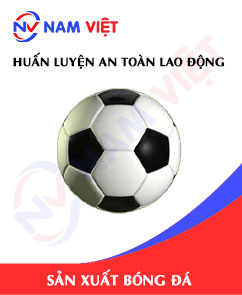
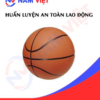
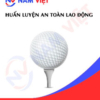



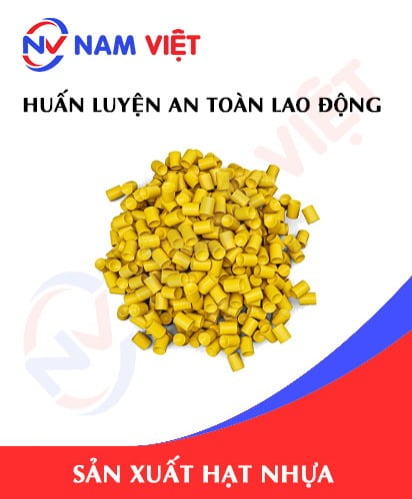
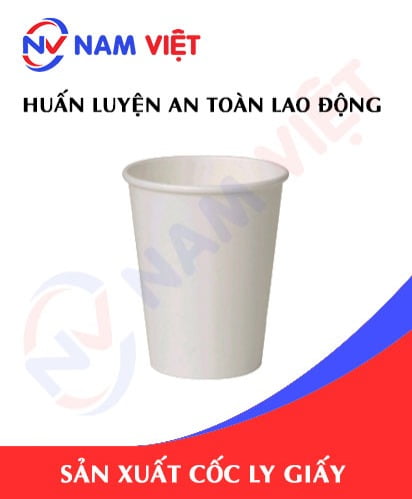
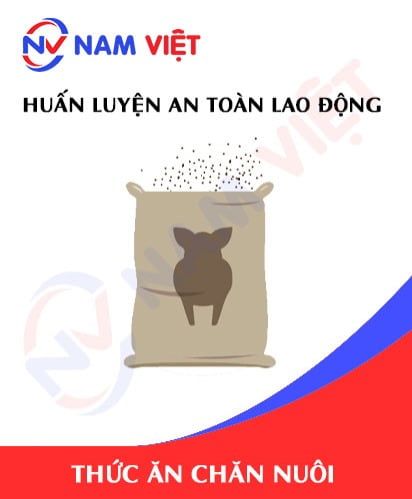
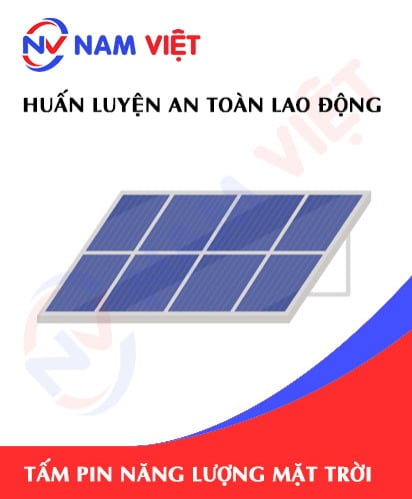
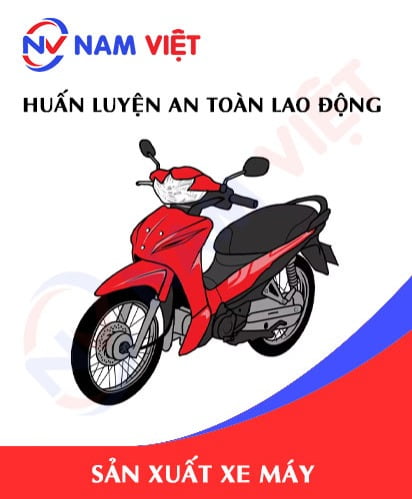
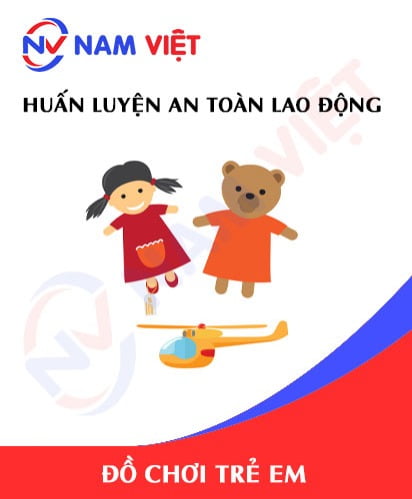
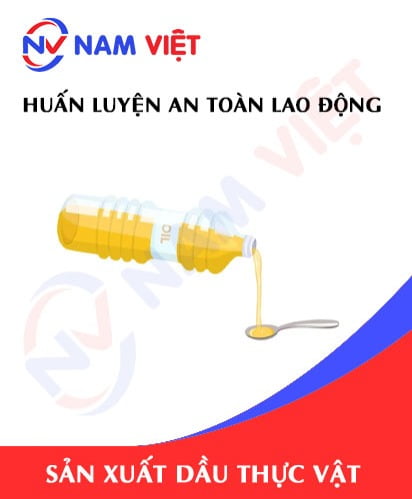
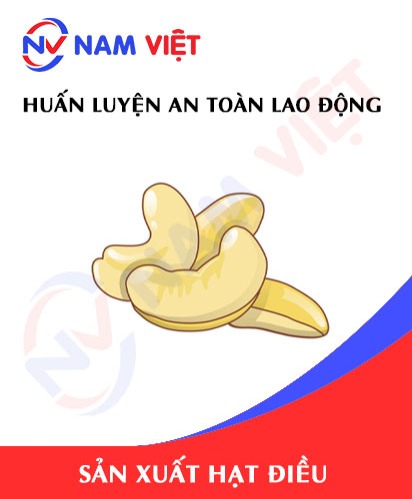
Review Occupational Safety Training for Soccer Ball Manufacturing
There are no reviews yet.